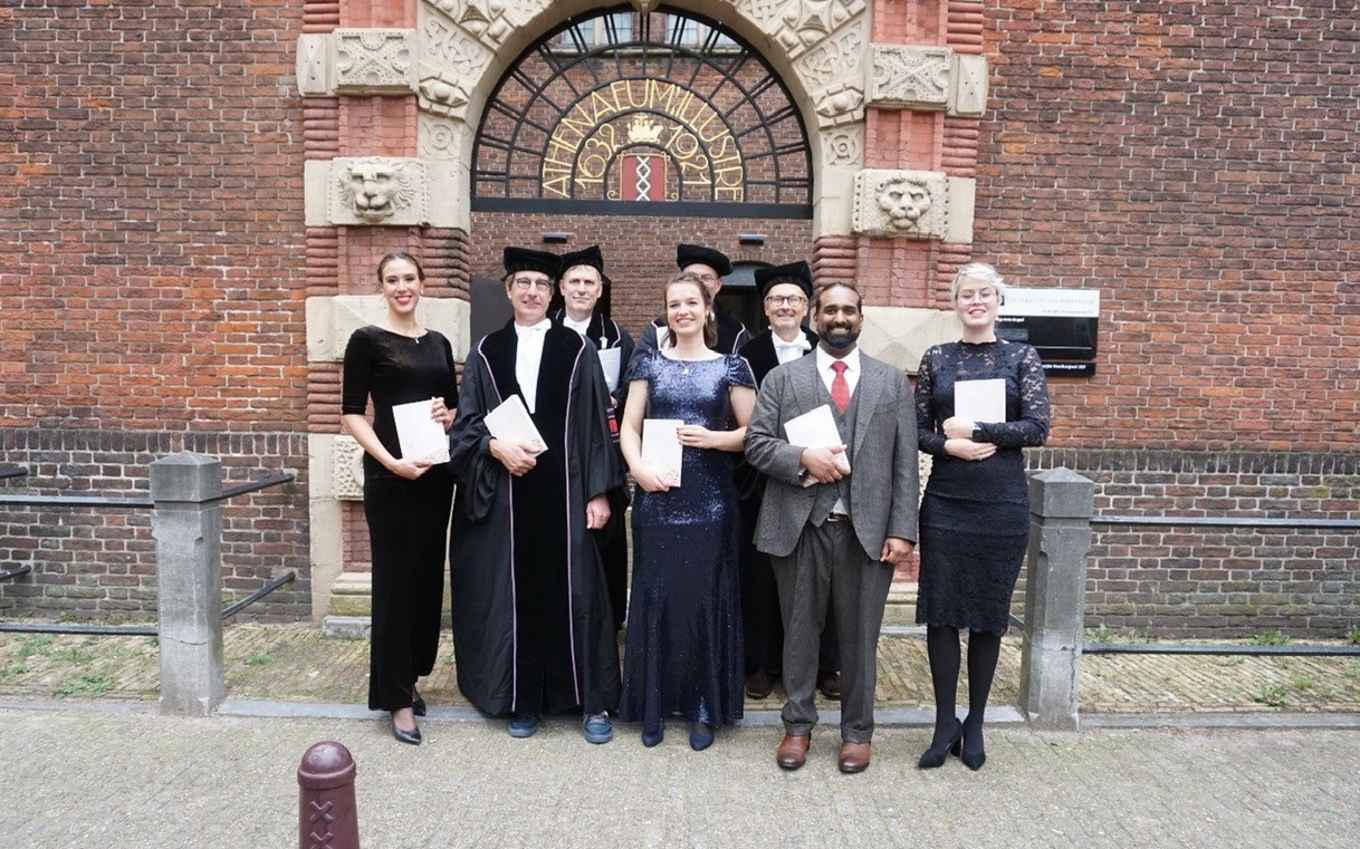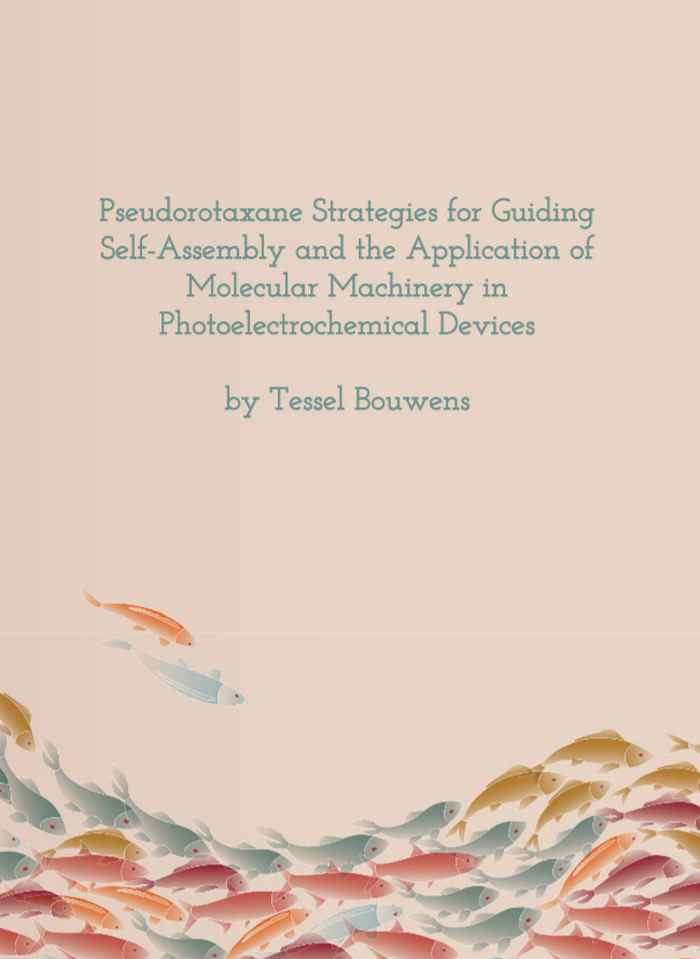Cum Laude PhD in chemistry for Tessel Bouwens
Applying molecular machinery to prevent charge recombination in solar cells
20 September 2021

With her research, Bouwens contributed to fundamental insights in the process of supramolecular self-assembly, as well as the application of supramolecular strategies in solar cells. She used molecular machinery to produce molecular systems that can prevent charge recombination in dye sensitized solar cells. Through carefully conducted research, involving challenging experimental procedures and demanding physico-chemical measurements, she has demonstrated the viability of this exciting novel concept. In addition, she devoted a substantial part of her thesis to provide a new perspective on pathway engineering in the self-assembly of large nanostructures. Thus, she has proven to be a broadly oriented and conceptually strong researcher.
About Tessel Bouwens
Tessel Bouwens studied chemistry at the University of Amsterdam. In the first year of her bachelor's studies, she won the Young Talent Encouragement Prize Chemistry of the Royal Holland Society of Sciences and Humanities (KHMW). During her master’s study she followed the Excellence Master track 'Sustainability: the Molecular Approach’ offered by the Holland Research School of Molecular Chemistry (HRSMC). Part of this programme was the writing of a research proposal for a PhD thesis, which Tessel got awarded in 2016.
During her PhD under supervision of Prof. Joost Reek and Dr Simon Mathew, she developed the concept of the so-called 'ring-launching solar cell'. This improves the efficiency of the cell by launching charged rings (hence the name) away from the donor, thereby inhibiting charge recombination. This device based on molecular machinery was awarded the poster prize at the Faraday Discussions 2019. Tessel Bouwens aims to continue her career in the field of Artificial Photosynthesis.
Thesis summary
Over the years, chemists have become masters of covalent bond formation, demonstrated by the ability to synthesize complicated natural products and their derivatives. Conversely, control of structures beyond the molecule has not yet reached the same level of sophistication. Supramolecular organization is ubiquitous in biology and non-covalent interactions are extensively applied to (pre-) organize the individual compositional elements to achieve optimal operation as emergent functionality. Understanding (supra)molecular organization could enable the creation of novel types chemical systems with new functions. This thesis aims to explore the use of supramolecular organization by using pseudorotaxane strategies to create functional chemical systems. As both fundamental understanding and application are investigated in this thesis, the work is divided into two parts.
Part A demonstrates two examples of pathway engineering for non-covalent synthesis by employing a pseudorotaxane strategy. In one example the ring is used as a catalyst to guide self-assembly, while in the second example the ring binding impedes on the possible outcomes of multi-ligand architectures, and thereby organizing the self-assembled structures.
In part B the central topic is supramolecular organization to improve charge separation in artificial photosynthetic devices. Photoelectrochemical devices benefit from implementing supramolecular organization promoting the forward electron propagation, eventually leading to enhanced device performance. Using this bio-inspired approach, three different types of molecular machines were designed and applied to address electron-hole recombination issues found in p-DSSCs. In both parts of the thesis, the power of the non-covalent bond is demonstrated, gaining insight in possible applications and underlying concepts of chemistry beyond the molecule.
Also read
- Holland Research School of Molecular Chemistry awards PhD project to Tessel Bouwens
- Faraday Discussions poster prize for Tessel Bouwens
